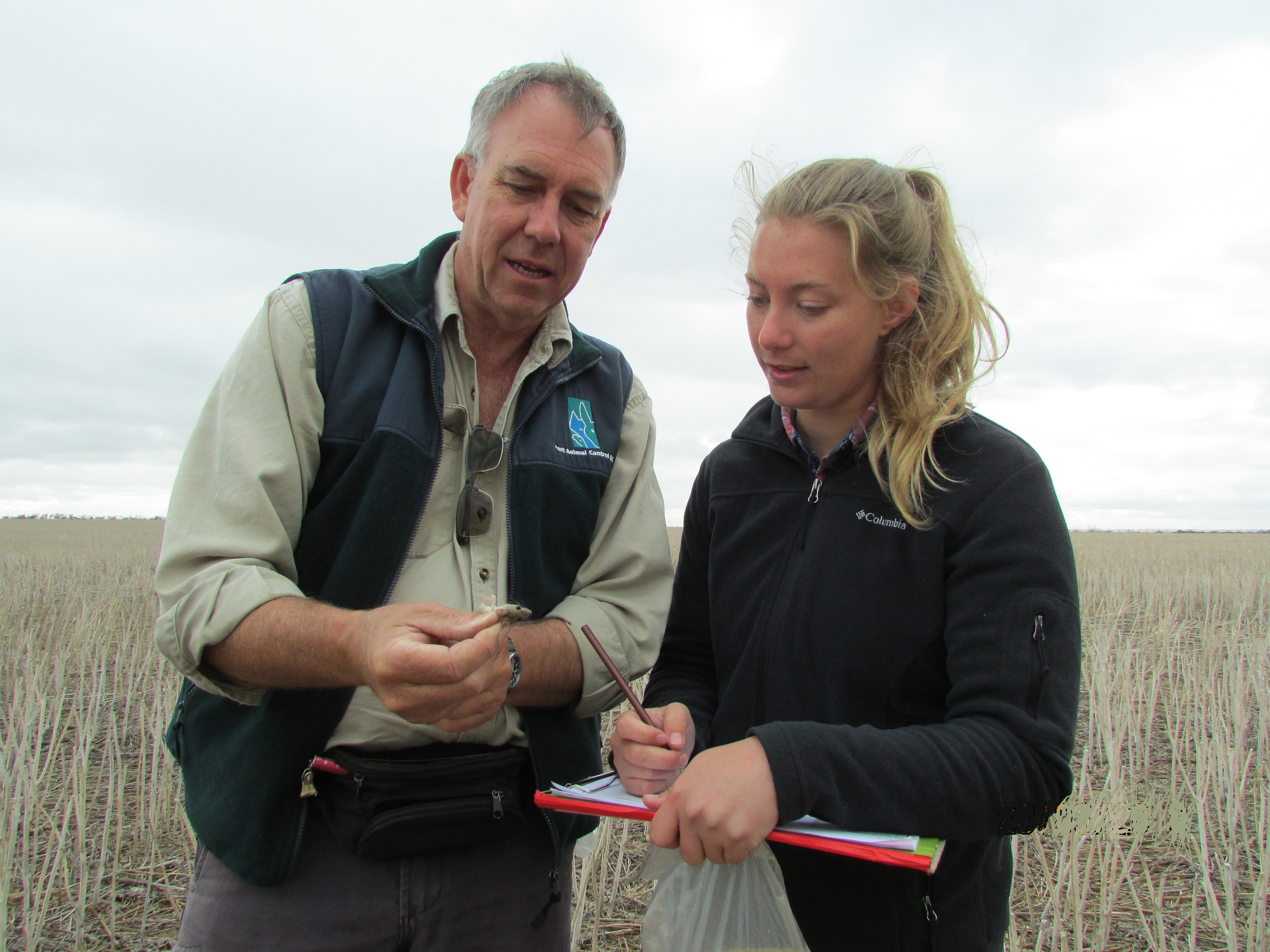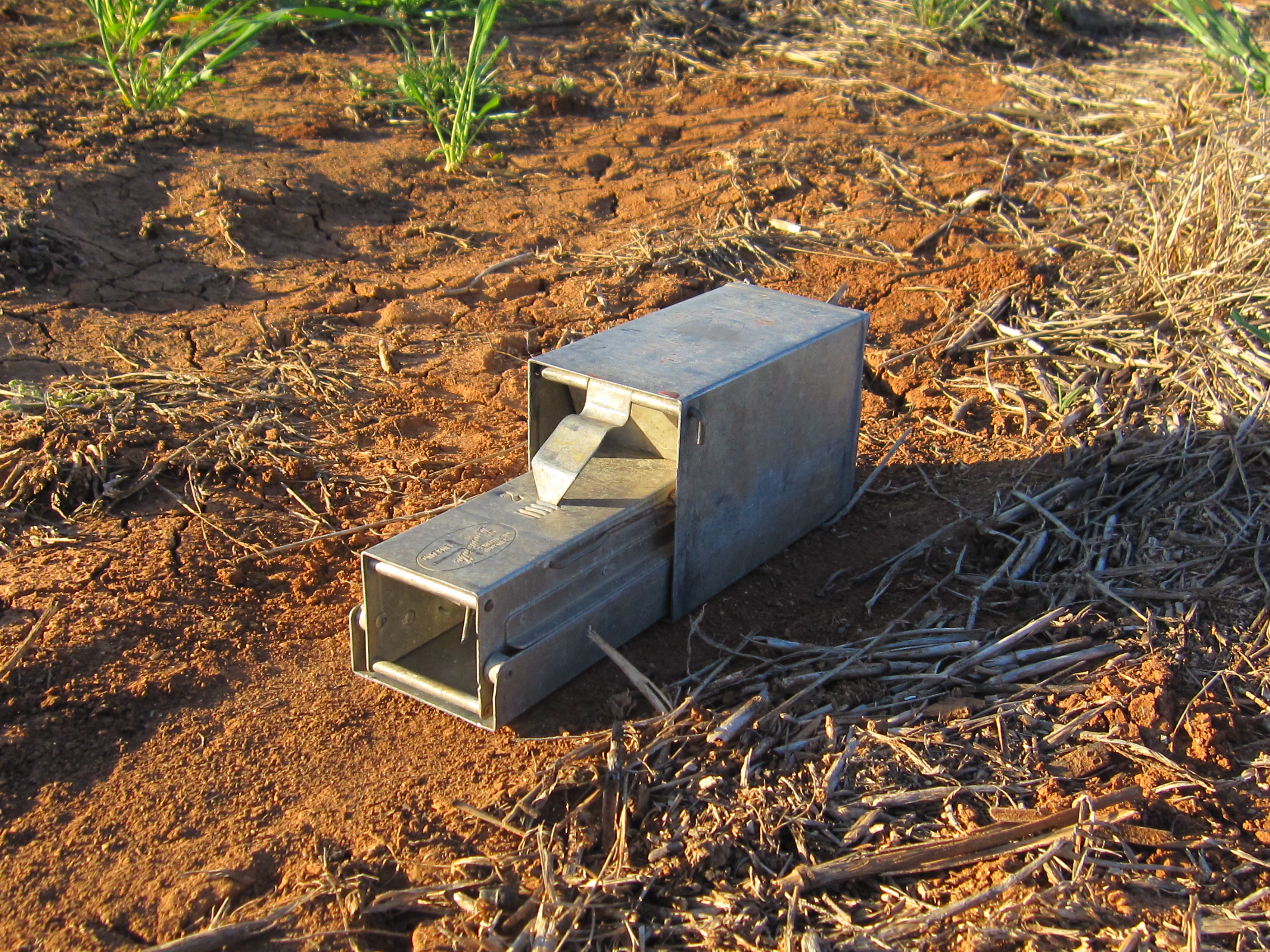Tackling Australia's persistent mouse problem
In partnership with the Grains Research and Development Corporation(GRDC), we're working to enhance our understanding of mouse ecology, biology and management.
Our aim is to provide better solutions for controlling an increasing prevalence of mice in Australian grain-growing regions, supporting Australian businesses, families and communities.
Mouse plagues can wipe out thousands of hectares of crops
Where there are grain crops in Australia, there are usually mice.
While many crops can thrive unaffected where mouse populations are low, high populations can cause significant damage, destroying thousands of hectares of crop, contaminating stored grain, and spreading disease.
For reasons not yet known to scientists, mouse plagues only occur in China and Australia. In 1993, Australia's worst ever mouse plague caused an estimated $96 million worth of damage.
Mice are the ultimate breeding machine
Mice are prolific breeders. They can give birth to a litter of up to 10 offspring every 20 days, and they can fall pregnant as soon as they have given birth. Often, they reach near plague proportions before farmers are even aware of a problem.
At these numbers, mice are difficult and costly to control.
'A mouse population density of about 800-1000 mice/ha is considered a mouse plague. Anything over 200 mice/ha is said to cause economic damage'.
High mouse populations are becoming a persistent problem
Until recently, spikes in mouse populations had been followed by population crashes and subsequent years free from problematic mouse numbers.
Now, higher populations are becoming a persistent, rather than intermittent, problem.
No-till farming provides food and shelter for mice
Current farming systems may inadvertently contribute to the increased prevalence of high mouse populations, providing the right conditions, like shelter and food, for mice to survive year-round.
Where farmers would once prepare soil for their crop through ploughing and land preparation, now, they are leaving their soil undisturbed.
Called no-till farming, this practice leaves heavy stubble and plant residues on the soil, protecting it from sun and wind, but providing a friendly environment for mice to thrive.
Surveillance and early detection are key for mouse control
Preventing mouse plagues and their devastating effects on Australian crops starts with appropriate practices and precautions for minimising food availability to mice.
Then, mouse monitoring and early detection are key.
Through detecting changes in mouse populations early–at least two months prior to sowing–growers can proactively employ control methods to deter a detrimental population spike.
Working with the GRDC, CSIRO scientists are leading new research to better detect, monitor and control mouse populations, focussing on three key areas:
- understanding mouse ecology, biology and management
- increasing surveillance
- investigating mouse feeding preference.
Tackling Australia's persistent mouse problem
In partnership with the Grains Research and Development Corporation(GRDC), we're working to enhance our understanding of mouse ecology, biology and management.
Our aim is to provide better solutions for controlling an increasing prevalence of mice in Australian grain-growing regions, supporting Australian businesses, families and communities.
Mouse plagues can wipe out thousands of hectares of crops
Where there are grain crops in Australia, there are usually mice.
While many crops can thrive unaffected where mouse populations are low, high populations can cause significant damage, destroying thousands of hectares of crop, contaminating stored grain, and spreading disease.
For reasons not yet known to scientists, mouse plagues only occur in China and Australia. In 1993, Australia's worst ever mouse plague caused an estimated $96 million worth of damage.
Mice are the ultimate breeding machine
Mice are prolific breeders. They can give birth to a litter of up to 10 offspring every 20 days, and they can fall pregnant as soon as they have given birth. Often, they reach near plague proportions before farmers are even aware of a problem.
At these numbers, mice are difficult and costly to control.
'A mouse population density of about 800-1000 mice/ha is considered a mouse plague. Anything over 200 mice/ha is said to cause economic damage'.

High mouse populations are becoming a persistent problem
Until recently, spikes in mouse populations had been followed by population crashes and subsequent years free from problematic mouse numbers.
Now, higher populations are becoming a persistent, rather than intermittent, problem.
No-till farming provides food and shelter for mice
Current farming systems may inadvertently contribute to the increased prevalence of high mouse populations, providing the right conditions, like shelter and food, for mice to survive year-round.
Where farmers would once prepare soil for their crop through ploughing and land preparation, now, they are leaving their soil undisturbed.
Called no-till farming, this practice leaves heavy stubble and plant residues on the soil, protecting it from sun and wind, but providing a friendly environment for mice to thrive.
Surveillance and early detection are key for mouse control
Preventing mouse plagues and their devastating effects on Australian crops starts with appropriate practices and precautions for minimising food availability to mice.
Then, mouse monitoring and early detection are key.
Through detecting changes in mouse populations early–at least two months prior to sowing–growers can proactively employ control methods to deter a detrimental population spike.
Working with the GRDC, CSIRO scientists are leading new research to better detect, monitor and control mouse populations, focussing on three key areas:
- understanding mouse ecology, biology and management
- increasing surveillance
- investigating mouse feeding preference.

